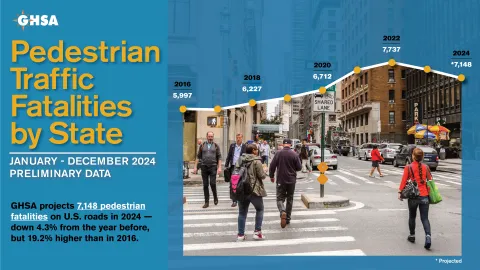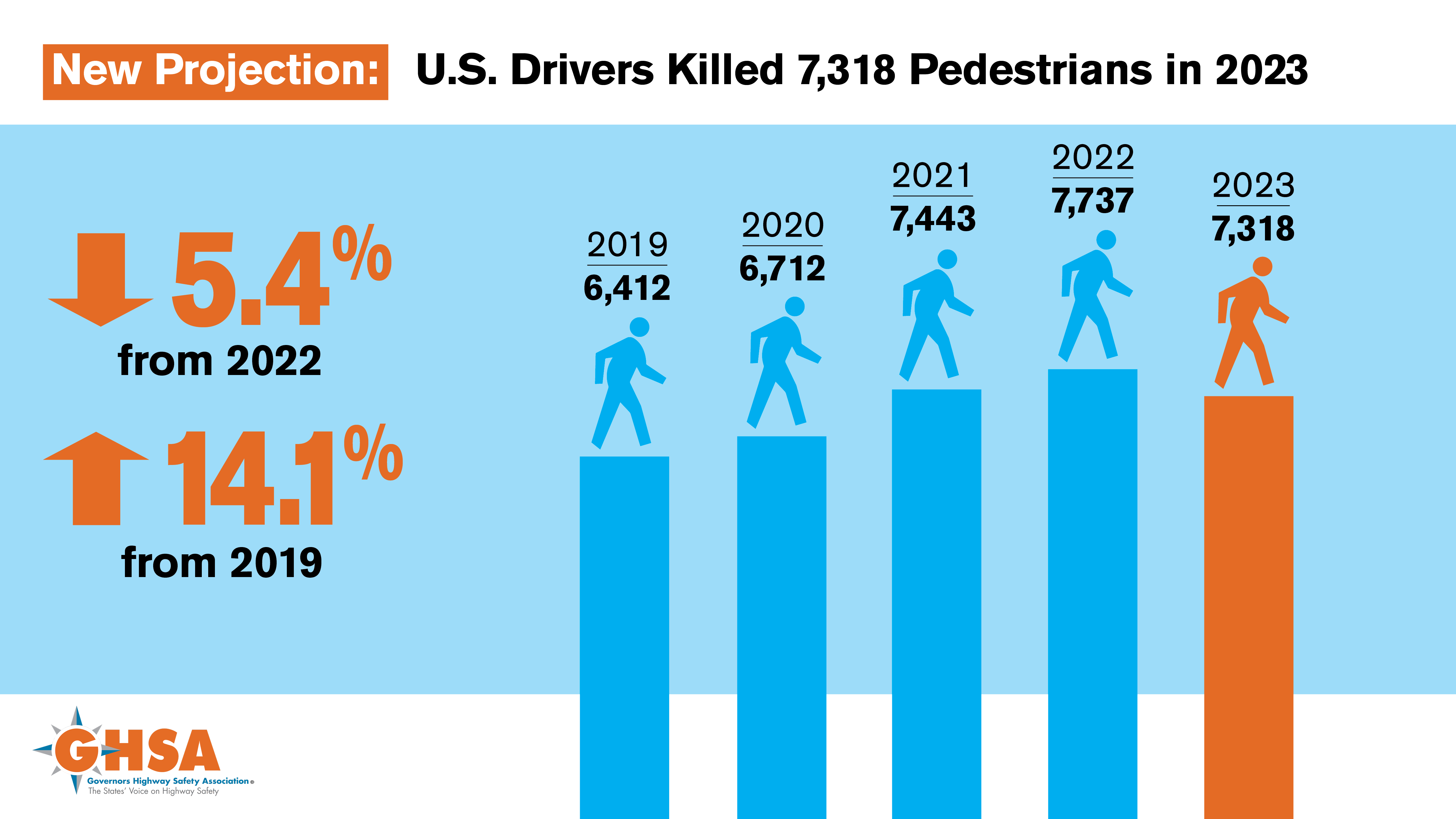Bicyclists, Pedestrians & Micromobility


Walking, biking and riding an electric scooter (e-scooter) are healthy, environmentally friendly transportation options. More people are walking, biking or scooting to work, cities are implementing micromobility programs (shared bikes and e-scooters) and transportation planners are increasingly taking pedestrians,bicyclists and scooter riders into account when making infrastructure improvements.
Unfortunately, pedestrians, cyclists and scooter riders are at an inherent disadvantage when involved in traffic crashes: When a faster-moving vehicle collides with them, the vehicle always wins. Advances in crashworthiness and technology have contributed to the decline in vehicle occupant deaths, but people outside of vehicles remain susceptible to serious injury or death when struck by a motor vehicle.
GHSA projects that drivers struck and killed 7,148 people walking in the United States in 2024 (Pedestrian Traffic Fatalities by State: 2024 Preliminary Data). While that's down 4.3% from the year before and the second annual decline, it's nearly 20% higher than the 2016 level.

Each year approximately 2% of fatalities resulting from motor vehicle crashes are people on bicycles. There were 1,166 bicyclists killed on U.S. roadways in 2023, up 4.4% from the year before and the most fatalities since federal recordkeeping began in 1975 (Overview of Motor Vehicle Traffic Crashes in 2023, National Highway Traffic Safety Administration).
In every year since 1975, many more male than female bicyclists were killed in crashes with motor vehicles (Insurance Institute for Highway Safety).
Electric scooters (e-scooters) exploded in popularity after appearing on city streets virtually overnight in 2018. They are part of a rapidly evolving form of transportation referred to as micromobility, which also includes docked and dockless shared bicycles, skateboards and other personal transportation devices. Micromobility options are popular in crowded urban environments and college campuses but are becoming increasingly commonplace in small towns and on suburban neighborhood streets. Emergency rooms have seen an increase in crashes and head injuries involving e-scooter riders, and many drivers are not accustomed to sharing the road with this new form of transportation. GHSA’s report, Understanding and Tackling Micromobility: Transportation's New Disruptor, funded by State Farm®, offers concrete examples of what State Highway Safety Offices (SHSOs) can do in partnership with others to ensure micromobility riders and all road users safely share the road.
GHSA recognizes the importance of bicyclist, pedestrian and micromobility rider safety, and its member SHSOs administer programs focused on improving safety for people who using these modes. A few examples:
GHSA does not track state pedestrian safety laws but does track bicycle helmet laws in states where they have been enacted. Few states have enacted bicycle helmet laws. While GHSA only tracks state laws, many localities require helmet use for some or all bicyclists.
Sources: Insurance Institute for Highway Safety (IIHS) and State Highway Safety Offices (SHSOs).
Laws last reviewed by SHSOs in June 2025.
GHSA projects that drivers struck and killed 7,318 people walking in 2023 – down 5% from the year before but 14% above 2019, the last pre-pandemic year.
